A deep dive into the Northern Great Plains

At the recent Plains Safaris ecotourism conference, Martha Kauffman, Managing Director, World Wildlife Fund’s Northern Great Plains Program, talked about plow up, why the plains are important, and new projects that may shape the future of the region. The following includes some highlights from her talk.
“I’m going to give you a bit of an overview of conservation and what I see in terms of what’s coming in the future. And some of the things I’m most excited about in terms of trends and opportunities for us to work together.”
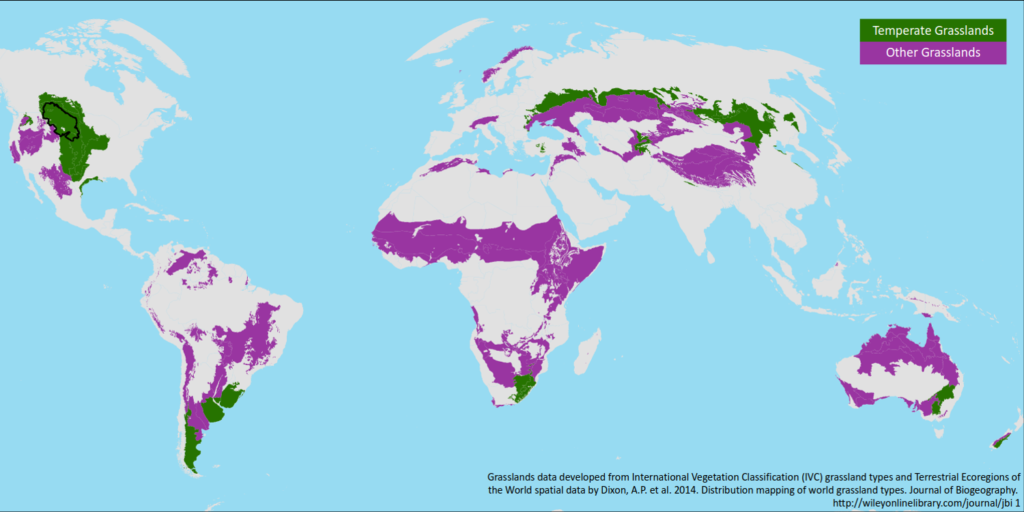
“This map is of the planet’s grasslands. The green are the temperate grasslands and the purple are all the other grasslands – coastal grasslands, savannas. And so you’ll see there’s not a ton of temperate grasslands on the planet. In the Great Plains, you’ll see this black outline, that’s the Northern Plains.”
“Temperate grasslands, savannas and shrub land are the least-protected, most converted biome on the planet. That’s one of the reasons WWF decided to start a program in the Northern Plains. It’s one of the four large, intact, temperate grasslands ecosystems on the planet. So what we have here in the GP is something globally really precious, and really important.”
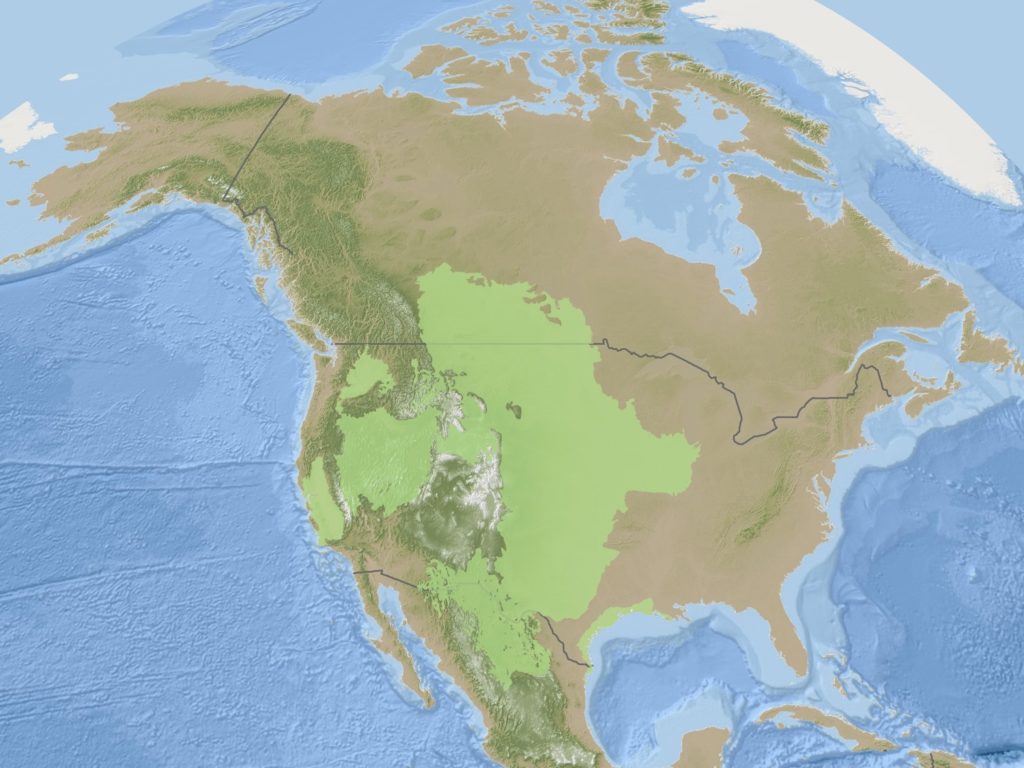
“This is a map of all the grasslands of North America and I just love it because I think it shows you what a huge part of North America grasslands are. This is a significant biome on this continent. And once again it’s not one that most people are very aware of or talk much about.
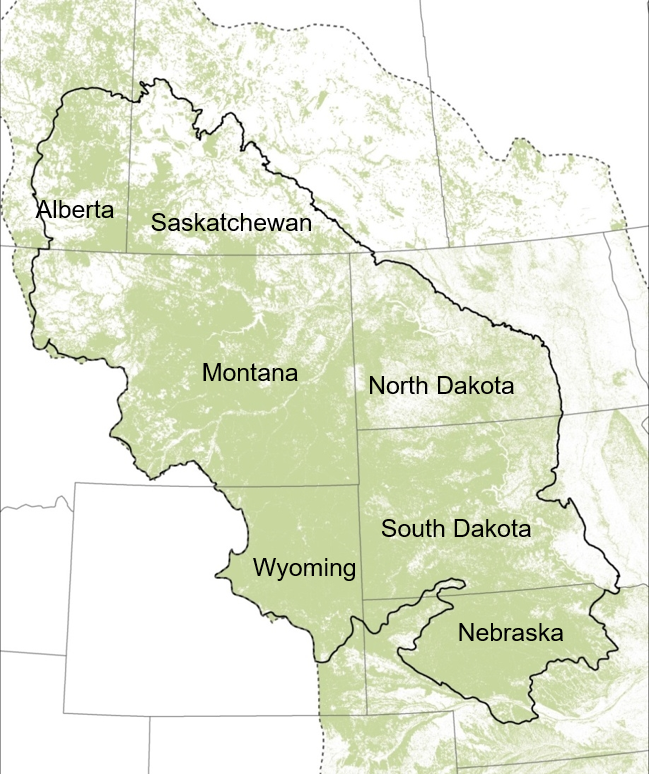
And in the Northern Great Plains, Kauffman said, about two-thirds of that grassland is still intact. So why is it important to conserve it?

1. Clean air
The green areas on this map are sequestering carbon and red areas are emitting it. The intact grasslands are holding onto and sequestering carbon.
2. Water
Grasslands filter the water that comes through the heart of the continent. Where there are intact grasslands (mainly in the west), there’s fewer problems with water quality.
3: Wildlife
Our iconic animals have a lot of superlatives. The largest land mammal (bison), the fastest mammal in North America (pronghorn), the most endangered mammal in North America (black-footed ferret).
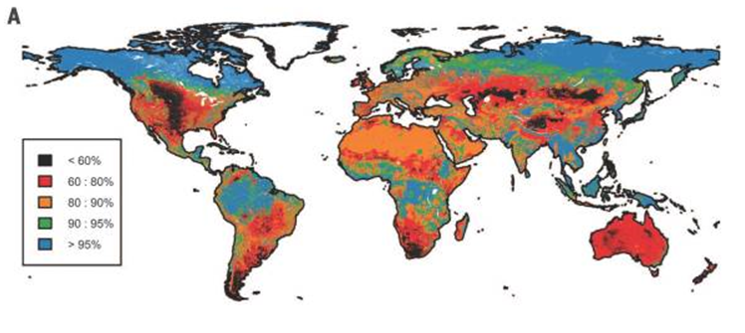
This map looks at the abundance of native species remaining.
“The black areas where there is the greatest impact to the abundance of native species remaining are grasslands. And you’ll see the Great Plains kind of pop out there. This is not something to be proud of, obviously, but it’s something for us to aspire to and be aware of that we’ve had a big impact on the native species abundance in this region,” Kauffman said.
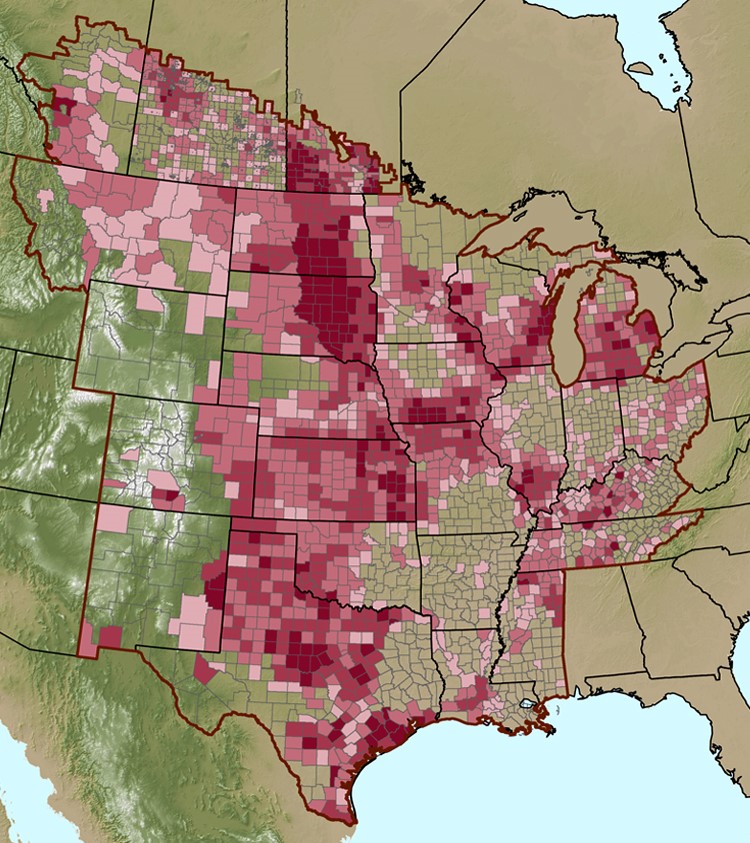
This is a map from WWF that shows grassland loss from 2000 to 2016 and the percent of grassland, shrubland, and wetland lost by county over that period (darker the color, the more the loss). A lot of the recent plow up has been occurring along the Missouri River, in the Dakotas, and some areas further south.
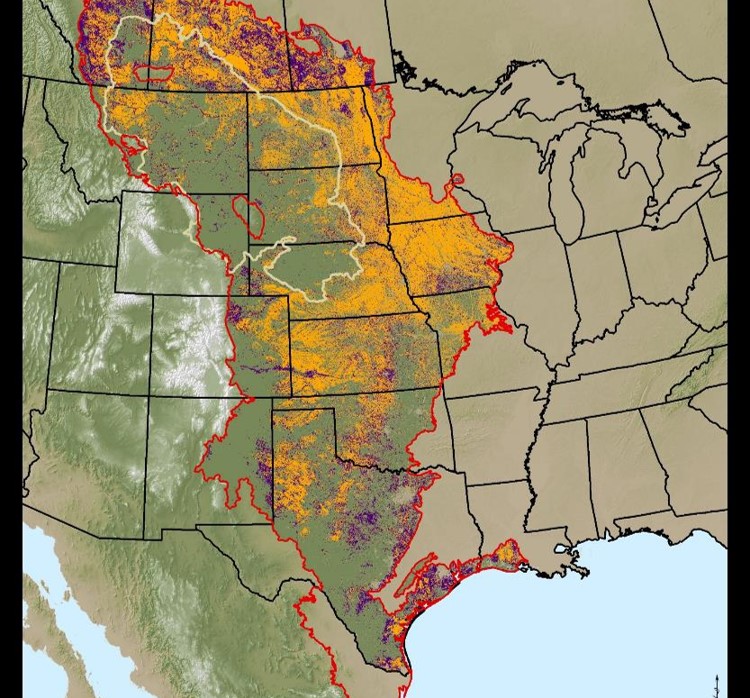
The orange in this map is the land that was plowed in 2016 – 2.5 million acres converted. The purple was turned back into grassland.
What about the future?
“I actually have a lot of hope. There’s a lot of good things happening out there. A lot of really exciting and innovative things,” Kauffman said.
Because a lot of the land is privately owned, we’ll want to work with landowners on conservation strategies. We also need to work with tribal communities. They hold about 10 percent of the land in the Northern Plains, but they’re in really large chunks. They’re managing those lands independently and they face financial challenges doing so. “But they’re also really committed to conserving it,” she said.
“You have to be flexible. You have to be innovative. But at the end of the day, the economics have to work… As much as you’d like to have everything there and restored and bison running around and everything back to the way it was, at the end of the day, these private landowners have to make a living, and they have to be able to pay the bills and keep the ranch. So the economics really have to work. And that’s one of the reasons I’m so excited about what the Center for Great Plains Studies is doing around ecotourism and this conference, to bring everyone together.”
Future points to watch
- Government funding and resources for wildlife friendly fencing, reseeding
- Tribal lands tourism
- A focus on soil worldwide
- Land stewardship coalitions: especially those with representation from the public and private sectors.
- Certification programs: Including those for beef production sustainability and bird friendly lands
- New conservation techniques: Technology to monitor species
“One more thing that I think we really need: bold and unified action,” Kauffman said. “We all love this grassland. We all love the pronghorn and the animals that live here and the birds and the prairie chickens. We all love these things, so how can we work together to keep that as part of the future for our kids?”
A pdf of Kauffman’s presentation is available on the Plains Safaris website.
